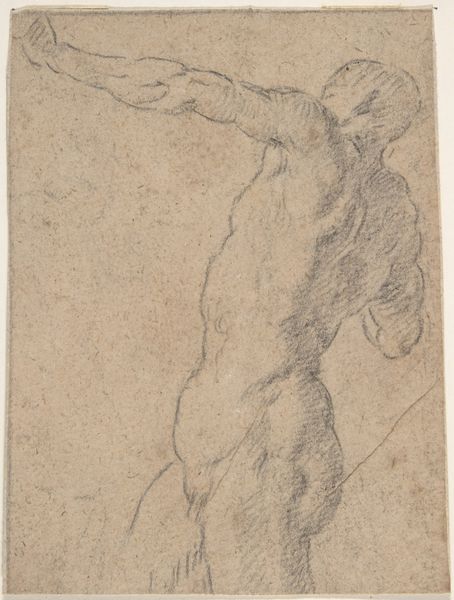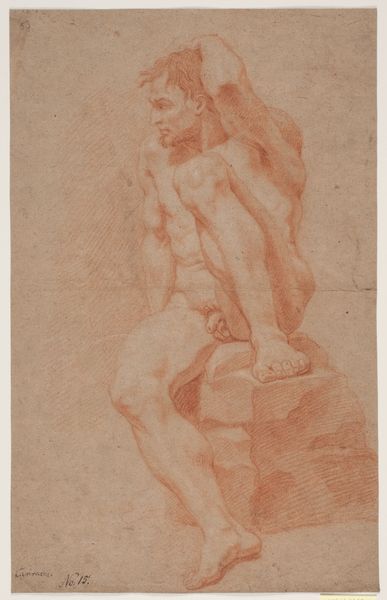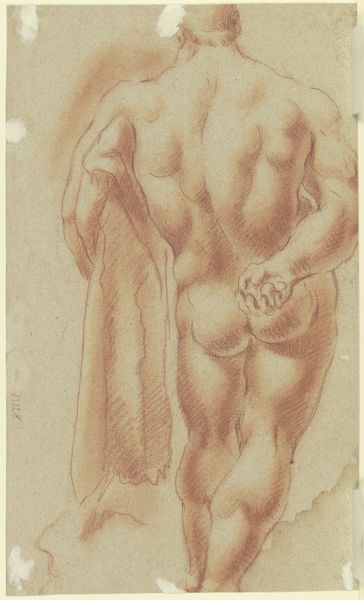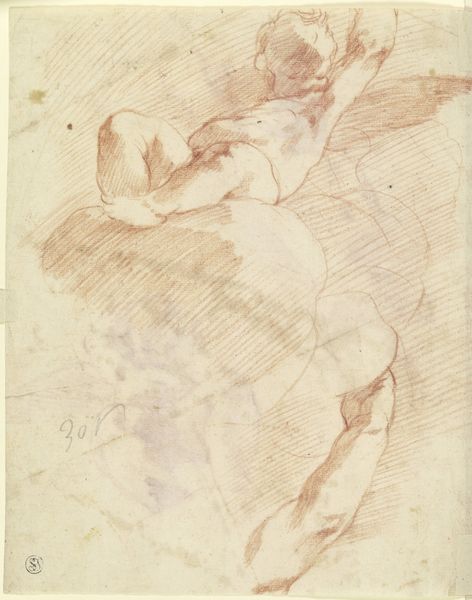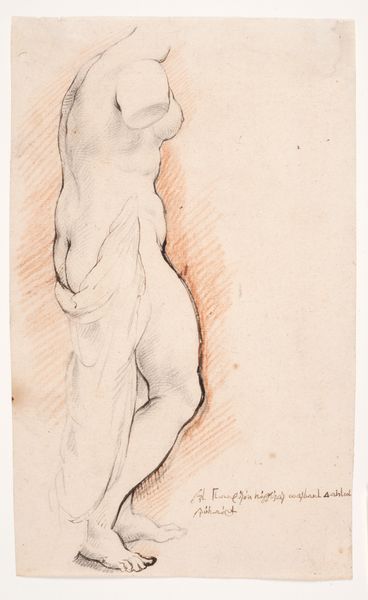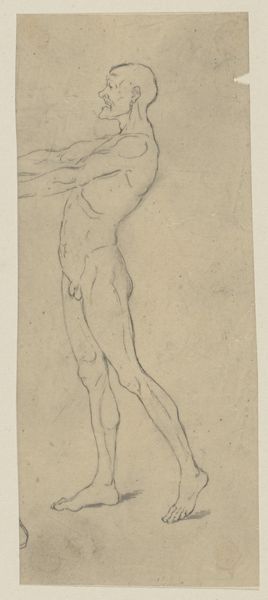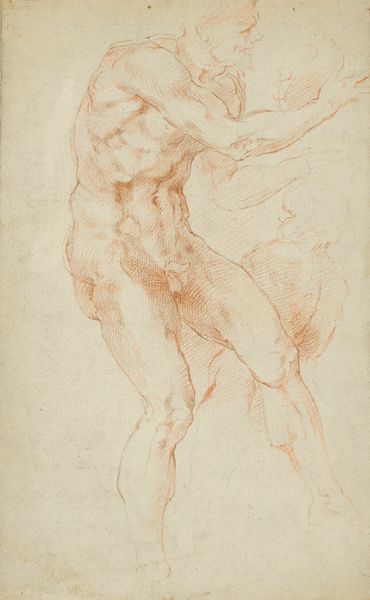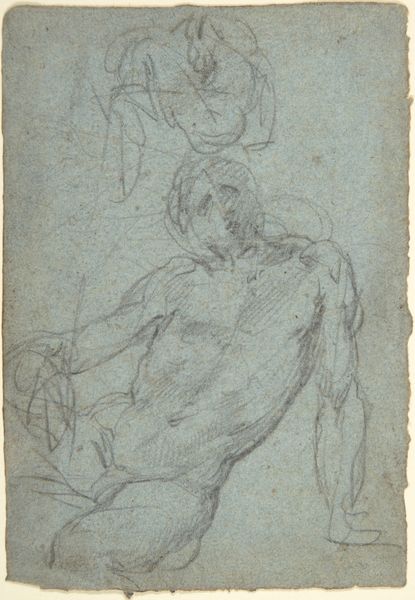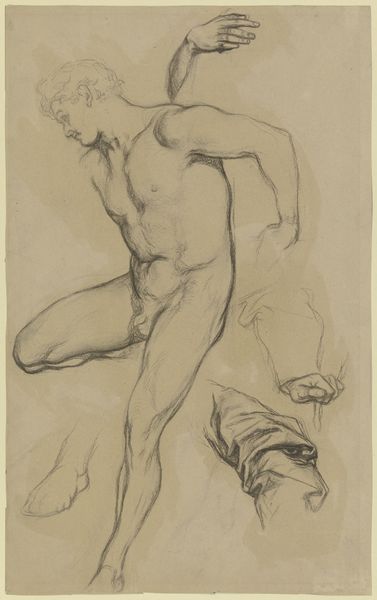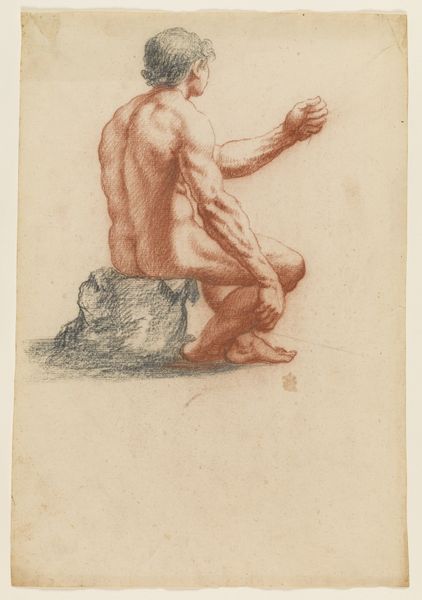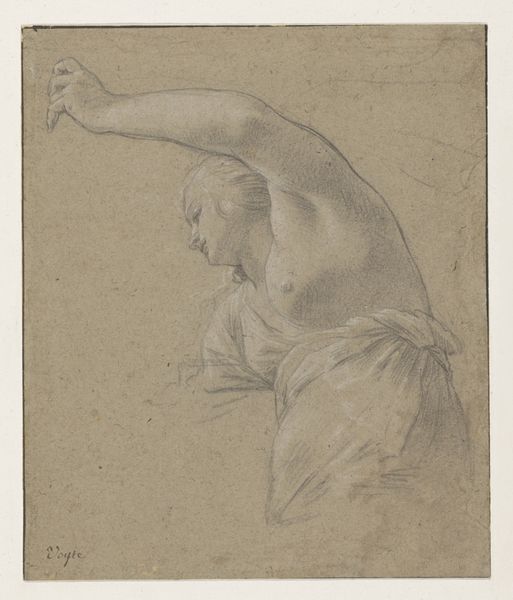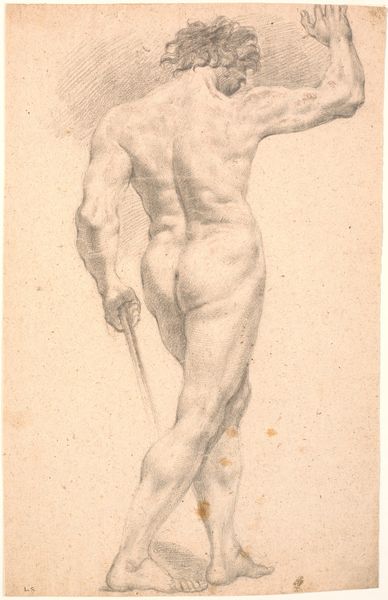
Anatomical Study (écorché). Two studies of a man's flayed left arm 1628 - 1630
0:00
0:00
drawing, dry-media, pencil
#
drawing
#
figuration
#
form
#
dry-media
#
pencil drawing
#
pencil
#
line
#
history-painting
#
academic-art
#
nude
#
realism
Dimensions: 205 mm (height) x 297 mm (width) (bladmaal)
Willem Panneels made this anatomical study of a flayed arm on paper using pen and brown ink, with brown and grey wash. The drawing is an écorché, a figure drawn or sculpted without skin to display the musculature. The pen work is highly controlled, following the contours of the muscles with remarkable precision. The washes of ink create depth and volume, emphasizing the taughtness of the sinews. Panneels was clearly engaged with the craft of anatomical study, part of a broader cultural interest in understanding the human body during the Renaissance and Baroque periods. But beyond the science, there's a powerful sense of labor embedded in the image. An arm, after all, is made for work, and the removal of the skin serves to highlight the organic machinery that enables us to grasp, lift, and build. This drawing reminds us that even the most refined artistic creations are rooted in a deep engagement with materials and processes.
Comments
No comments
Be the first to comment and join the conversation on the ultimate creative platform.
